- Tata Motors
- Tata Motors Commercial Vehicles
- Tata Motors Passenger Vehiccles
- TML
- TMPV
- TMLCV
- Companies Act
- 2013
Mazda Evolves With Time
- By 0
- June 15, 2020
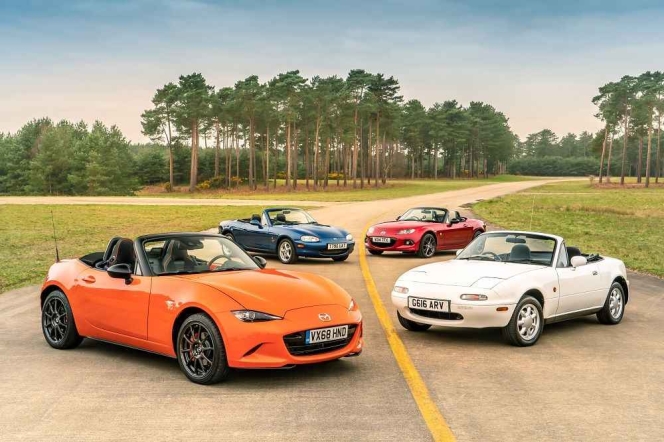

The Toyo Kogyo Company continued to manufacture machine tools alongside the three-wheel trucks, expanding its car production capability in 1960 to produce the Mazda R360 Coupe - Mazda’s first passenger car.
It was from this point that the Toyo Kogo Company really started to make an impression on the automotive world with four new vehicles produced in just four years and cumulative vehicle production reaching a million by 1963. By 1970 the company was producing twelve vehicles and with the accumulative production figure approaching five million it had already developed engine technology that no other manufacturer had been able to perfect - the rotary engine.
At the heart of every car is the engine, and in their quest to develop the perfect combustion method, Mazda has developed some of the industry’s most interesting power units over the years. In the 1960’s Mazda saw the potential of the rotary engine, the ability to develop high power from a lightweight, small capacity engine with a smooth operation due to rotating parts rather than reciprocating movement. The unique characteristics of the rotary all contributed to the driving experience that has made Mazda rotary engine cars a favourite of drivers the world over and brought motorsport success to Mazda over the last fifty years.
Mazda has never been one to follow the herd and in 1995 it was the first automotive manufacturer to develop and use a Miller Cycle engine, initially in the Mazda Xedos9 and more recently the Mazda2 in Japan. Previously limited to large capacity engines, the Miller cycle engine was used in ships and trains, it improves efficiency through reduced pumping losses and is used to control NOx at high engine load by reducing the temperature at full compression.
With the launch of the CX-5 in 2012, Mazda introduced the Skyactiv G and Skyactiv D engines, developed in pursuit of the perfect engine to improve efficiency and emissions. The major breakthrough was a common compression ratio of 14:1 for both fuel types, the world’s highest compression ratio of any petrol engine, and for diesel, the world’s lowest compression ratio. The new petrol engine improved fuel efficiency and torque by 15 percent, while the diesel improved both by 20 percent, offering better real-world driving emissions and efficiency.
The production process also benefited from the low compression ratio of the diesel engine. With a compression ratio of 14:1 the diesel engine can be constructed entirely from aluminium, this led to a standardisation of diesel and petrol engine manufacturing, allowing them to be made on the same line with the same machining processes, this was an industry first.
Pushing the boundaries of what is possible in the development of the internal combustion engine Mazda launched the world’s first compression ignition petrol engine in the Mazda3 in 2019. Controlled by a spark plug, the SPCCI engine is the second step in Mazda’s quest to develop and petrol engine with the ideal combustion method. Developing compression ignition for petrol engines had long been a goal of engineers, some believing it was an impossible goal. In the SKYACTIV-X, a spark plug is used to control compression ignition, resulting in dramatic improvements across a range of important performance indicators.
Plastic manufacturing and recycling has been a concern for Mazda for over three decades with a focus on research and development. In 1992 Mazda was the first manufacturer to recycle bumpers, initially just using the recycled plastic for hidden parts such as undertrays. By 2011 Mazda had developed a world-first recycling technology, which enhanced the process it uses to recycle used bumpers from vehicles whose useful life has ended into raw plastic resin for use in new vehicle bumpers. The recycled materials first started being used in the rear bumper of the Mazda Biante minivan.
Under the ‘Mazda Biotech material’ name, the company has succeeded in developing the automotive industry's first high-strength heat-resistant plant-derived bioplastic for interior parts, and, in 2007, the world's first biofabric for vehicle seat upholstery made entirely from plant-derived fibre. In 2015 Mazda developed the world’s first bio-plastic that was of a high enough quality to be used in design decoration parts on the Mazda MX-5 and then on CX-5, CX-30 and MX-30.
Turning their attention to the painting process, Mazda achieved world-class low CO2 emission levels with the implementation of the Three Layer Wet Paint System in 2002. Then in 2009 Mazda developed the Aqua-tech paint system to create one of the most environmentally-friendly automotive paint systems in the world. It reduces emissions of volatile organic compounds (VOC) by 78 percent compared to Mazda's previous oil-based paint systems without increasing energy consumption (and associated CO2 emissions) which was already one of the lowest of any paint system in the world.
As the world turned its focus onto car emissions in the 1990s, Mazda unveiled the HRX-1 hydrogen powered concept car at Tokyo motor show in 1991. Hydrogen as the motive power for a car has the environmental benefit of the exhaust emissions being water, but to develop a standard reciprocating engine to run on hydrogen requires expensive modification. With a long heritage in developing the rotary engine, Mazda engineers recognised the potential to run the rotary on hydrogen because of the unique way the engine combusts, meaning the expensive modifications required to convert a reciprocating engine to hydrogen did not apply to a rotary.
In 2006 Mazda became the world’s first company to commercially lease hydrogen powered rotary engine cars with the hydrogen Mazda RX-8 RE. In 2007 Mazda developed the world’s first catalyst material using single nanotechnology with two main features to inhibit the thermal deterioration caused by the agglomeration of precious metal particles and offer a significant improvement in oxygen absorption and release rates for enhanced emissions clearing purification.
As Mazda continues in its quest to create the world’s most efficient internal combustion engine and the most environmentally friendly production techniques and materials the company hopes to create world firsts that benefit both the customer and environment.
Magic Behind MX Moniker
While celebrating centenary year Mazda is also looking to the future with the debut of its first all-electric production vehicle – the Mazda MX-30, a unique, stylish and versatile crossover EV.
With its distinctive styling and freestyle doors combined with a cabin where the use of environmentally-friendly materials has been carefully matched to meticulous quality and finish, the MX-30 is a stand-out addition to the Mazda line-up. However, why does it wear the MX moniker? A badge made most famous by the MX-5.
The MX prefix is given to a car that takes on a challenge to create and deliver new values without being confined by convention regardless of vehicle type. When it was revealed in 1989 the Mazda MX-5 was exactly this kind of car, as the automotive industry as a whole moved away from the affordable sports car, Mazda defied convention to create a perfect modern reinterpretation of the classic rear-wheel drive roadster.
More than three decades later the MX-5 needs no introduction, but the first car to wear the MX badge is less famous, however there’s no forgetting it once you’ve seen it. Revealed in 1981, the Mazda MX-81 Aria concept car was created by Italian styling house Bertone, who using Mazda 323 running gear created a futuristic wedge-shaped hatchback. A one-off concept that certainly met the defy convention ethos of MX models, it led to a future relationship with Bertone, while things like the high-mounted taillights and pop-up headlamps appeared in future Mazda production cars later in the eighties.
Next in the MX lineage was the 1983 MX-02 concept car, a big flat sided five-door hatch with large windows, aerodynamic rear wheel covers and flared in door mirrors. Unique features included rear wheel steering and a windscreen head-up display. The one-off theme continued with the 1985 Mazda MX-03, which again was a radical looking concept car, but this time it was a defy convention sports car that was powered by a triple rotor 315ps engine. Conceived purely as a concept, this low-slung coupe, was pure futuristic exuberance, with a cabin that featured an aircraft style yoke rather than a wheel, plus digital displays and a head-up display, its technology tally also including four-wheel steering and all-wheel drive, while the long low body delivered an aerodynamic Cd figure of just 0.25.
While the MX-02 and MX-03 shared some of the same futuristic design cues, the MX-04 was completely different. Displayed at the 1987 Tokyo Motor Show, the MX-04 was a front-engine rear-wheel drive sports car chassis that had removable fibreglass panels, but not just one, but two different sets, allowing the car to switch from a glass dome roofed coupe to a beach buggy style open sided roadster. Powered by a rotary engine this barmy shape-shifting sports car was never a serious contender for production, but little did outsiders know that Mazda was already developing the MX-5, and just two-years later, the most famous car to wear a MX badge arrived.

And the next cars to wear the MX badge were also production models, both cars built on the MX-5’s success and offered very different coupe styles. Sold from 1992 to 1993, the Mazda MX-3 was a four-seat coupe hatchback that disregarded the convention for normal hatchbacks to offer buyers something far more stylish and sportier, while it further earnt its MX badge by being available with the world’s smallest mass-produced V6 engine. The larger MX-6 coupe conveyed big premium coupe style for family saloon money, but in the 1990s arguably the most radical car to wear the MX badge was the Mazda MXR-01.
Into the 21st century the MX moniker returned to adorn concept cars, all of which stayed true to the MX ethos of delivering something new by challenging convention: the 2001 MX-Sport Tourer concept was a radical MPV concept with freestyle doors and sweeping body design, that highlighted the fact an MPVs did not have to be boxy or dull, something the resulting Mazda5 proved. In fact, the 2004 Mazda MX-Flexa was a concept that was even closer to the final ground-breaking Mazda5 production car, sharing its popular sliding rear doors.
The 2002 MX-Sport Runabout concept previewed the modern look of the second-generation Mazda2, while the 2003 MX-Sportif was the concept that previewed the first generation Mazda3, which was a big step forward from the outgoing Mazda 323.
And now with the arrival of the ground-breaking MX-30, it’s appropriate that the MX name returns to a production model – as Mazda’s first production EV, the MX-30 is a car that represents a new chapter in Mazda’s history. (MT)
Tata Technologies Partners Synopsys To Accelerate SDV Development
- By MT Bureau
- October 17, 2025
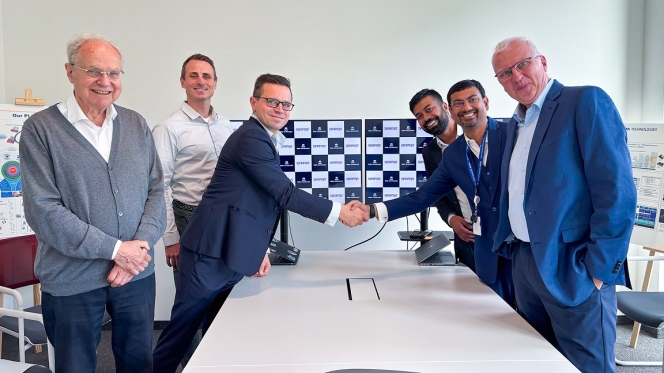
Tata Technologies has announced a partnership with Synopsys, a provider of engineering solutions, to accelerate the shift towards Software-Defined Mobility (SDV). The collaboration aims to accelerate the development, verification and validation of automotive electronics systems, helping Original Equipment Manufacturers address the complexity of SDVs.
The collaboration will combine Tata Technologies’ expertise in vehicle engineering with Synopsys’ virtualisation solutions to enable the deployment of electronics digital twins (eDTs).
The companies have already worked with a leading European luxury OEM in a pilot engagement, delivering a blueprint to transition the manufacturer's existing electrical/electronic (E/E) architecture to a next-generation software-defined design. Pilot programmes with other major OEMs are also underway across North America, Europe and India.
The joint effort will focus on major SDV domains, including ADAS, powertrain, chassis, infotainment and electrification. Key areas of focus include:
- Shift Left Enablement: Developing virtual prototypes and simulation models for early software bring-up.
- Analysis: Using Synopsys tools for performance, power, safety, and reliability analysis for faster ECU development cycles.
- Verification: Providing embedded systems and software verification and validation services aligned with ISO 26262 and ASPICE standards.
Sriram Lakshminarayanan, Chief Technology Officer, Tata Technologies, said, “The digital shift is redefining the future of mobility, and our partnership with Synopsys is a purposeful step towards realising a future led by software-defined innovations. As OEMs move to new ways of working, there is a growing demand for engineering and digital services. Together, we are empowering OEMs to deliver safer, smarter, and more sustainable vehicles that enhance the human experience and accelerate the industry’s transition to a software-defined future.”
Tom De Schutter, Senior Vice-President, Product Management & Markets Group at Synopsys, said, "The complexity of SDV systems requires a new level of collaboration across the automotive ecosystem. By bringing together our world-class digital twin, verification, and IP platforms with Tata Technologies’ engineering expertise and global delivery, we are enabling OEMs to accelerate development, validation and delivery of complex software- and AI-defined vehicles. The collaboration is a great example of how the automotive ecosystem is coming together to accelerate innovation while reducing risk and time to market in a dynamic mobility landscape.”
Mobileye To Showcase Its Tech At ARAI’s ADAS Test City Inauguration
- By MT Bureau
- October 17, 2025
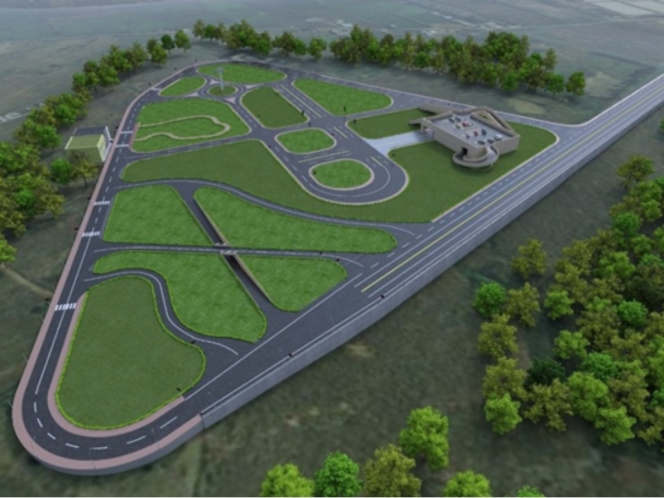
Mobileye, a leading provider of Advanced Driver Assistance Systems (ADAS) and autonomous driving technologies, is set to be a focus at the inauguration of the ADAS Test City on 12 December 2025 in Pune, India.
The ADAS Test City dubbed India’s first testing track dedicated to ADAS and autonomous vehicles, has been developed by the Automotive Research Association of India (ARAI).
Mobileye’s participation highlights its commitment to India’s evolving automotive landscape. The ADAS Test City is designed as a pseudo-urban test environment to validate key ADAS features such as Automatic Emergency Braking (AEB), Lane Keeping Assist (LKA), Pedestrian Detection and Adaptive Cruise Control under realistic driving conditions.
Elie Luskin, Vice-President, India and China, Mobileye, said, “The successful launch of India’s first dedicated ADAS testing track by ARAI marks a major milestone, underscoring the market’s commitment to scaling ADAS adoption and improving road safety – an ambition that aligns seamlessly with Mobileye’s long-term mission both globally and in India. As a global leader in ADAS and autonomous driving, Mobileye brings cutting-edge expertise and solutions to India, working alongside local partners to unlock new opportunities and deliver safer roads for all. We are proud to support ARAI in this important step and to continue strengthening our role in India’s ADAS journey.”
Mobileye’s leadership will play a central role in the event's dialogue:
- Keynote Presentation: Elie Luskin will deliver a keynote outlining Mobileye’s global roadmap and its impact on India’s drive toward safer mobility.
- Panel Discussion: Dhairyashil Gaekwad, Director, Business Development & Strategy, India, will participate in a panel on ‘ADAS for the Indian Market – From Premium to Mass Adoption,’ sharing insights on integrating safety systems across all vehicle segments.
The ADAS Show brings together automotive leaders from OEMs and suppliers to accelerate India’s transition toward intelligent mobility.
Sibros Appoints Vijay Sharma As New Chief Customer Officer
- By MT Bureau
- October 17, 2025

Sibros, the company behind the Deep Connected Platform for software-defined vehicles (SDVs), has appointed Vijay Sharma as its new Chief Customer Officer (CCO).
In his new role, Sharma will lead global customer success, solution engineering and customer programmes to support Sibros' expanding portfolio of connected vehicle solutions and growing customer base.
His leadership is expected to strengthen Sibros' capabilities across its Deep Connected Platform, as well as in areas like functional safety (FuSa), security, applications, systems, diagnostics & electronic and electrical architecture. This focus will enable end-to-end SDV partnerships with customers.
Sharma brings nearly two decades of global experience from FEV, where he served as Managing Director and Technical Director at FEV India. At FEV, he led large-scale vehicle software, connectivity and energy mobility programmes for Indian and global customers.
Hemant Sikaria, CEO, Sibros, said, “Vijay’s combination of deep technical insight and customer-focused execution aligns perfectly with our mission to power the software-defined future of mobility. As we scale our solutions and support a broader range of OEMs worldwide, his leadership will ensure our customers can deploy, adopt, and evolve with confidence.”
Vijay Sharma, said, “The industry is transitioning from one-time launches to continuously updatable, software-driven vehicles. Sibros is uniquely positioned to enable that shift, and I’m excited to help our customers around the world implement the platforms and programs needed to unlock their SDV strategies.”
As CCO, Sharma will guide the full customer lifecycle, bridging product, engineering and business teams to drive successful outcomes. This move comes as OEMs and innovators across passenger, commercial, two-wheel and off-highway segments adopt the Sibros platform.
Mahle Begins Supplies Of Cooling Module For Stationary Battery Storage Market
- By MT Bureau
- October 16, 2025

Tier 1 supplier Mahle is entering the stationary battery storage systems (BESS) market after securing its first series order for a cooling module. These storage solutions are used for providing and stabilising power grids and for the temporary storage of renewable energy from sources like wind and solar power.
The company shared that its customer is an international commercial vehicles and drivetrain manufacturer that builds its own battery storage systems. Mahle will leverage its experience in developing cooling modules for electrified buses for this new sector. The newly developed cooling module will go into series production in 2026.
Christian Kuechlin, Vice-President, Mahle Industrial Thermal Systems, said, “We can easily transfer the knowledge of cooling modules we have gathered in the transportation sector to stationary battery storage system in containers. Since the space in the container is mainly to be used for battery stacks, Mahle develops space saving, compact and efficient cooling solutions in line with customer requirements.”
Older stationary BESS were cooled by simple air conditioning systems. However, the higher energy density in modern lithium-ion batteries generates more waste heat, requiring a higher cooling capacity.
The Mahle module provides up to 42 kW of liquid cooling. This ensures the batteries operate in the optimal temperature range of 20deg Celsius to 30deg Celsius, which is vital for long service life, durability and stable load management.
Mahle is expanding its business beyond the automotive sector. In industrial thermal management, the company is also developing modules for liquid-cooled cables in fast-charging stations for electric vehicles. Thermal management technologies can also benefit high-performance computing, data centres and manufacturers of heat pumps or photovoltaic systems.


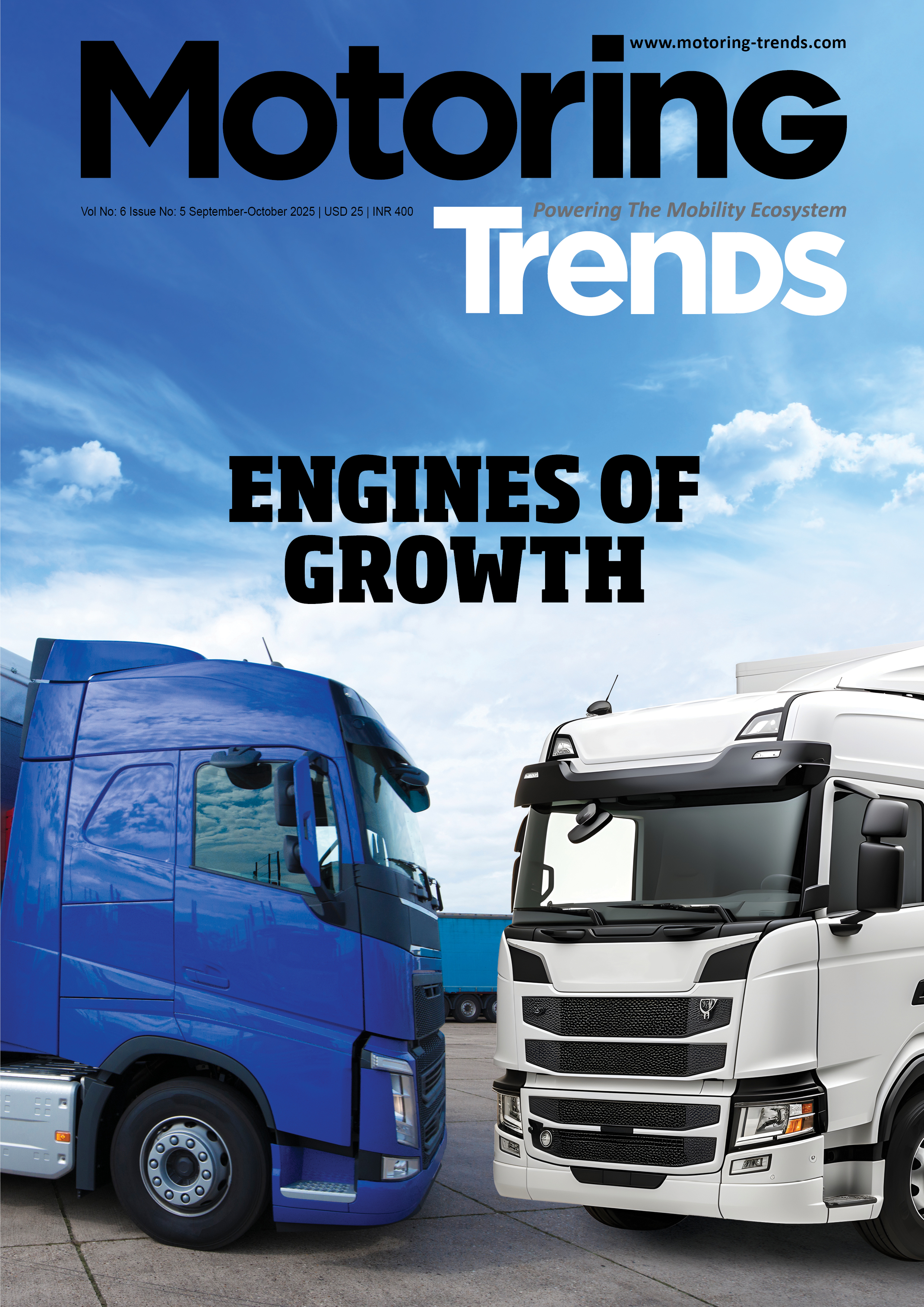

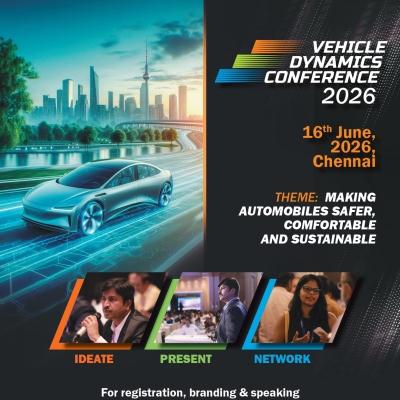

Comments (0)
ADD COMMENT